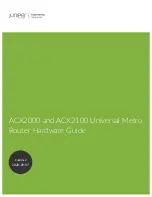
Lantronix
ION x6010 User Guide
33493 Rev. F
Page 12 of 261
If the Loopback function is enabled on the Fiber port of Media Converter A, End Device B is the tester;
the test signal will be inserted into the Fiber RX of Media Converter A through Media Converter B and be
looped back at Fiber port of Media Converter A and received by End Device B via Media Converter B.
The x6010 Loopback function cannot be enabled on both copper and fiber ports at the same time; an
error message displays if attempted.
A typical x6010 Fiber port Loopback applications is shown below.
Figure 4: Typical Loopback function on a Fiber port
A typical x6010 Copper port Loopback applications is shown below.
Figure 5: Typical Loopback function on a Copper port
LOS (Loss of Signal) Detection
The x6010 Loss of Signal (LOS) detector monitors the amplitude of the incoming signal level and pulse
density of the received TIP/RING signals. A LOS condition is detected when the incoming signal has “no
transitions”. The LOS condition is cleared when the incoming signal has “transitions”. In addition, the
x6010 application software may get the LOS status via interface with the FPGA. LOS detection is pro-
vided on the x6010 coax, fiber and copper interfaces as link down and link up traps and
show
com-
mands.
In-band Fiber Loopback Code Detection
This function enables detection and loopback of the fiber interface based on NIU Facility 2 (FAC2) loop-
back codes. Certain test devices (e.g., T-BERD 2310) can send in-band loopback codes to the local copper
(TP) interface, which are then transmitted to the remote device via the fiber. The remote device can













































